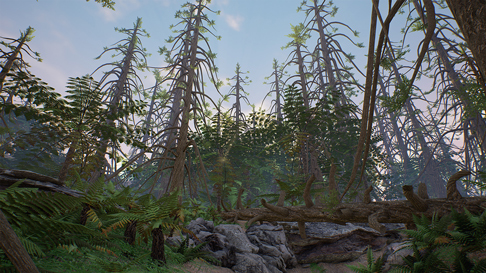Palaeontology, dinosaurs and prehistoric animals are frequently subjects for video games. Players have the opportunity to construct their own “Jurassic Park”, go fossil collecting and combat dinosaurs. A new study indicates that these games may contain negative and harmful themes that can confuse and lead to misconceptions about palaeontology.
An international team of researchers, led by scientists from the University of Birmingham, played and studied a variety of video games containing elements of palaeontology. An eclectic range of video games were sampled including Super Mario World, Animal Crossing and the “Jurassic Park/World” games. The team attempted to map what was “palaeo-fact” and what was “palaeo-fiction”.
Sorting “Palaeo-fact” from “Palaeo-fiction”
Dr Thomas Clements (University of Birmingham) and a co-author of the study explained:
“Loads of people are inspired by and get their understanding of dinosaurs from movie blockbusters like Jurassic Park, but no one talks about how massive the gaming industry is in shaping not only the public’s understanding of ancient life and also of paleontological science.”

Pleasantly Surprised by the Accuracy
The researchers were pleasantly surprised by the accuracy of some of the games. However, they quickly identified numerous negative tones that were repeatedly reflected in the gaming environment.
Dr Clements commented:
“When we played through many of these games, we were pleasantly surprised about the accuracy of games like Animal Crossing that provide accurate and educational information in a fun and engaging way. However, we also found that many games contain misleading, negative, and sometimes quite damaging themes – many already widespread issues in the gaming industry. It is common for palaeo-games to contain ethically dubious science, the illegal collection of fossils, ‘monsterification’ of animals, poor representation of minority groups, and the hypersexualisation of women.”
Writing in the journal EGUsphere Geoscience Communications, the scientists analysed the representation of palaeontology in hundreds of video games, classifying them into several categories. They then defined a number of factors which may help or hinder a video game’s effectiveness in promoting palaeontology to a wider audience. Their study has implications for ways that science communicators can address these issues when talking to the public about palaeontology and has a wider role in helping to support gender equality and ethnic diversity.
Portraying Palaeontology to the Public
Co-author Jake Atterby (University of Birmingham), stated:
“This paper is about how the science of palaeontology is portrayed to the public, at a time when many people get a lot of their knowledge from media and entertainment. Audiences can subconsciously learn from the media they consume, including depictions of our science that are deliberately exaggerated for entertainment. This can give players a false impression of ancient life and the work that we do. It is important for palaeontologists to understand the public’s perception of our science to help when we communicate our research.“
Everything Dinosaur acknowledges the assistance of a media release from the University of Birmingham in the compilation of this article.
The scientific paper: “The perception of palaeontology in commercial off-the-shelf video games and an assessment of their potential as educational tools” by Thomas Clements, Jake Atterby, Terri Cleary, Richard P. Dearden and Valentina Rossi published in EGUsphere Geoscience Communications.







What the heck has “gender equality and ethnic diversity.” got to do with dinosaurs in video games? I came to this site for prehistoric science and infotainment, not to have woke Marxist nonsense shoved in my eyes. Pathetic. Also, I think I’ll spend my money elsewhere if this is the direction Everything Dinosaur is going in.
The scientific paper compiled by researchers from the School of Geography, Earth and Environmental Sciences (University of Birmingham), the School of Biological, Earth and Environmenal Sciences (University of Cork) and the Museo di Scienze Naturali (Bolzano, Italy), examines how palaeontology is portrayed to the public, acknowledging that many people obtain a lot of their knowledge from media and entertainment. The researchers set out a framework to highlight the most frequently encountered palaeontological tropes observed in the video games market – both positive and negative. This article outlines (in brief) that framework, as provided by the Geography, Earth and Environmental Sciences Dept of the University of Birmingham.
Here is a link to the paper published in EGUsphere Geoscience Communications: https://bit.ly/3eheNGE
Chip on shoulder alert lol. Mentioning that palaentology is predominantly a male white pursuit is describing a fact. The same goes for representation of it in computer games. they are overwhelmingly about a Harrison Ford figure in a hat, with maybe an attractive white female accompanying. That’s a point worth making among other points this podcast raises.
You repeat a word you’ve heard others use: Marxism, but clearly have no idea what it actually means. It’s not Marxist to mention bias or inequality. It might be Marxist to suggest that the means of production should be in the hands of the proletariat maybe. But don’t worry infuriated, easily-hurt one, white men aren’t being usurped just yet, they still have the power mate.